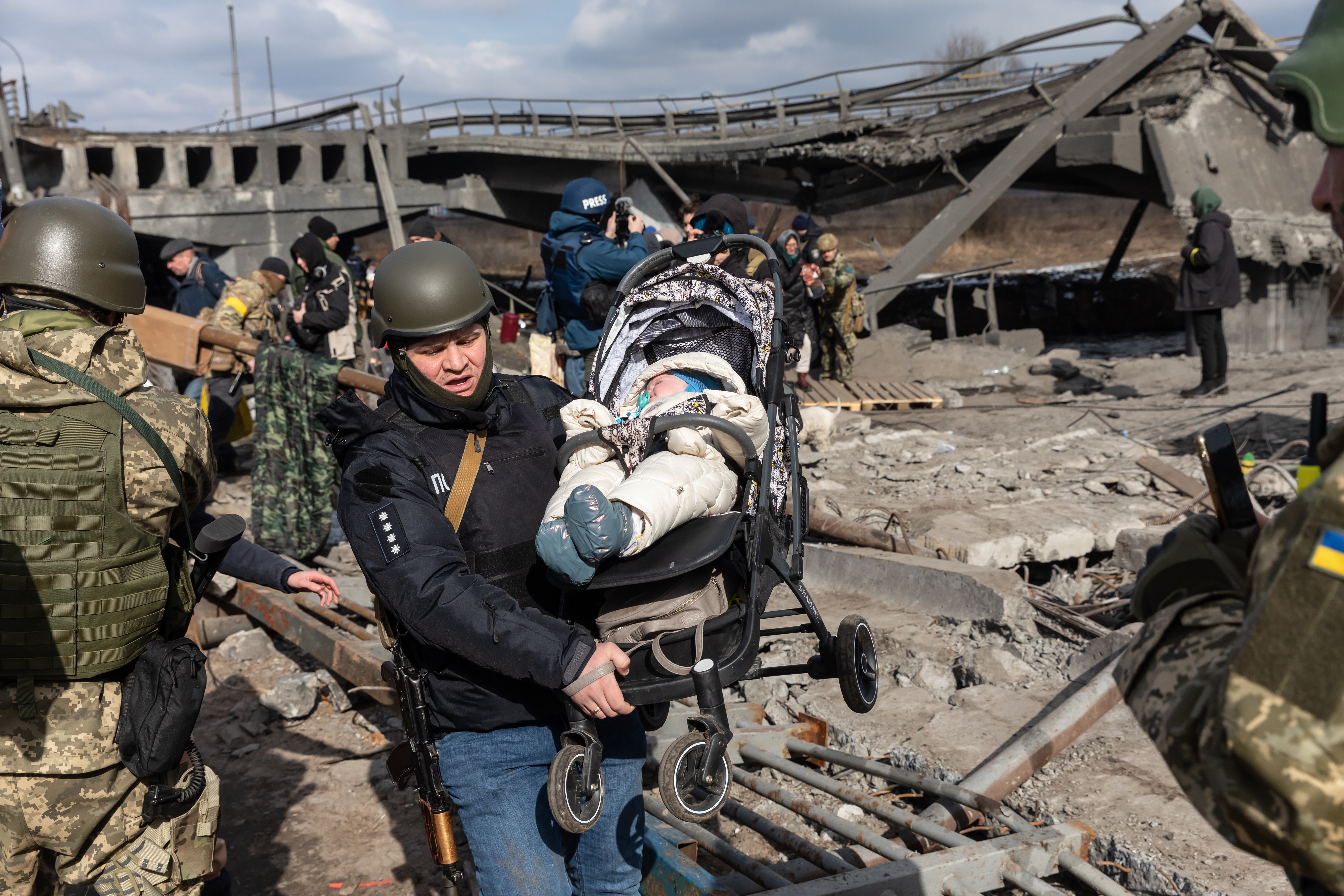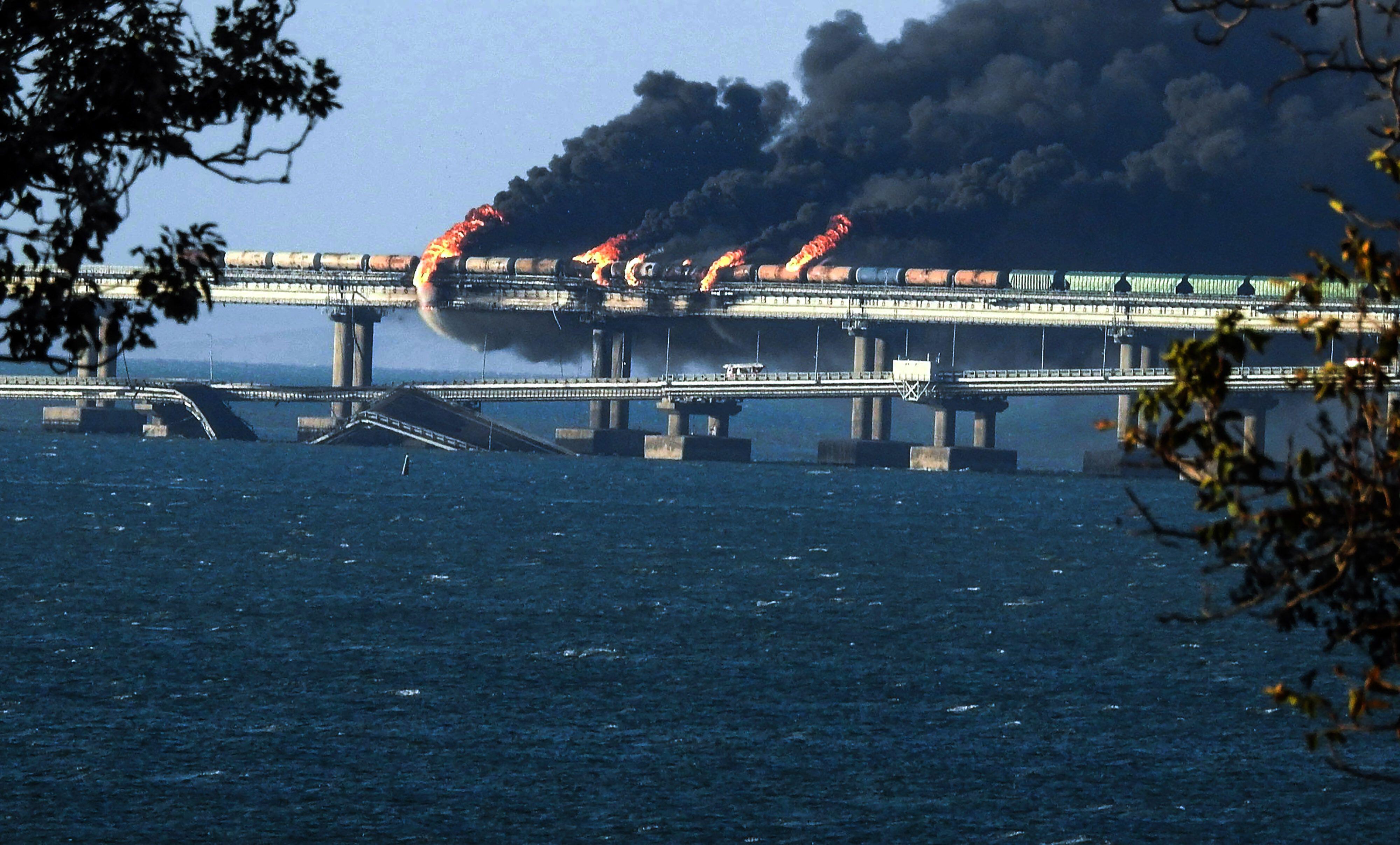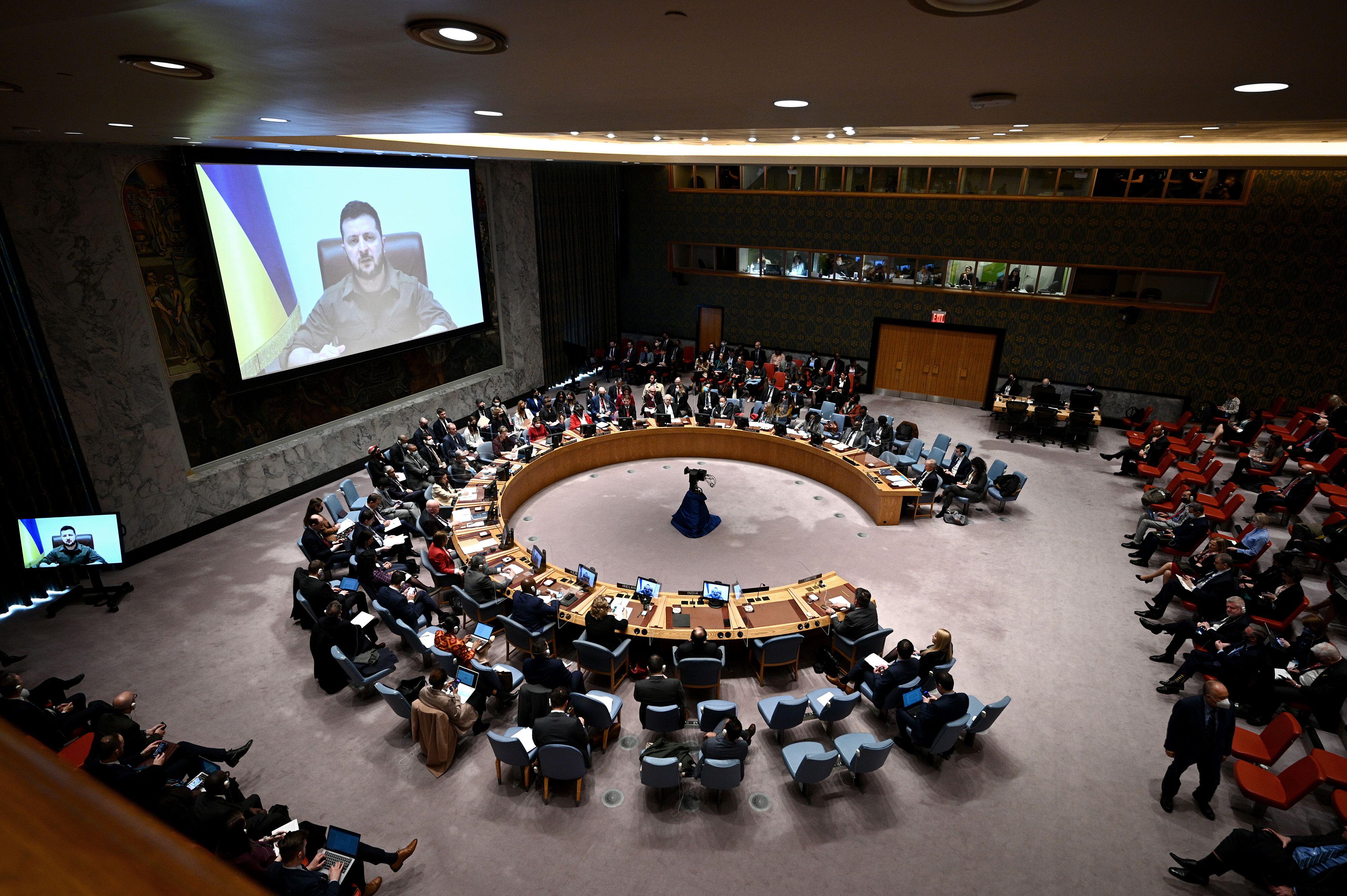Ukraine War is an ongoing conflict between Ukraine and Russia. In 2014, Russia annexed the Crimean Peninsula from Ukraine. Tensions between the two countries continued for years. Open war broke out in February 2022, when Russia launched a major invasion of Ukraine. The war is the largest and deadliest conflict in Europe since World War II ended in 1945. Tens of thousands of people have been killed, and millions of Ukrainians have fled their homes.

Background
Ukraine.
Located in Eastern Europe, Ukraine is Europe’s second largest country by area. Only Russia, Ukraine’s neighbor to the east, has more land. Ukraine’s southern border lies along the Black Sea and the Sea of Azov and has many valuable port cities. The rich farmland of central and western Ukraine is important to the world supply of a number of agricultural products, including wheat, barley, millet, and sunflower oil. The Donbas region of eastern Ukraine has large coal and mineral deposits and is the nation’s major industrial center.
About four-fifths of Ukraine’s people are ethnic Ukrainians, a Slavic people with their own culture, customs, and language. Russians are the second-largest group and make up about a sixth of Ukraine’s population. The Ukrainian and Russian languages are both widely spoken in Ukraine.
Ukraine was under Russian rule for many centuries, first as part of the Russian Empire and then as one of the republics of the Soviet Union. Many Ukrainians had long desired independence. This desire has been expressed in the works of Ukrainian writers such as Taras Shevchenko, Ivan Franko, Lesia Ukrainka, and Vasyl Stus. In December 1991, just before the collapse of the Soviet Union, over 90 percent of Ukraine’s people voted in favor of independence for Ukraine.
Tensions between Ukraine and Russia.
Russian President Vladimir Putin and other Russian leaders have long opposed governments in the former Soviet republics, including Ukraine, that try to develop closer relations with Western nations. This opposition is one example of how post-Soviet Russia has sought to reassert its international influence, especially over countries that were once part of the Soviet Union or were closely allied with it. Irredentism, in which one country wishes to absorb one or more other countries for historical or political reasons, is the name for ideas or actions like those taken by Russia under Putin. A major part of Russian irredentism is the idea that Ukraine does not, or ought not to, have its own national identity and is instead rightfully part of Russia.
Many Ukrainian people have seen closer relations with the Western world as a way to protect their country from Russian domination. By February 2014, major protests had broken out in Ukraine against the government of Viktor Yanukovych, the country’s president, who was criticized for his pro-Russian leanings. Yanukovych fled Ukraine as a result of these protests.
In March 2014, Russian forces took advantage of the unstable situation in Ukraine to seize control of Crimea. Crimea is a large peninsula in southern Ukraine with strategic ports on the Black Sea. The regional parliament in Crimea then voted to withdraw from Ukraine and become part of Russia. A few days later, Putin signed legislation declaring that Russia had annexed (absorbed) Crimea. Ukraine’s government, as well as the United Nations and the European Union, declared the actions in Crimea illegal, refused to recognize the annexation, and imposed economic sanctions on Russia.
In April 2014, armed pro-Russian separatists seized government buildings throughout eastern Ukraine. The separatists gained control over parts of the oblasts (provinces) of Donetsk and Luhansk, both in the Donbas region. In September, Ukraine’s parliament voted to grant self-rule to Donetsk and Luhansk and to give amnesty to most of the rebel fighters. A cease-fire was negotiated in February 2015, and both Russia and Ukraine agreed to withdraw heavy weapons from the conflict zone. However, fighting continued at a lower level for several years afterward. Some areas of the two oblasts remained outside the Ukrainian government’s control.
In 2019, Volodymyr Zelensky was elected president of Ukraine. Before entering politics, Zelensky had a successful career as an actor and comedian. Zelensky’s policy agenda included working to resolve the conflict in eastern Ukraine.
Russian invasion of Ukraine: 2022–present
Lead-up to invasion.
In 2021, Russia began massing troops near its borders with Ukraine. The troop numbers reached 100,000 by January 2022 and more than 150,000 by late February. Officially, Russian authorities claimed the forces were engaged in military exercises. Meanwhile, Putin demanded guarantees that Ukraine would reduce its military forces and never join the North Atlantic Treaty Organization (NATO). NATO is a military alliance to protect the freedom and security of its members, which include the United States, Canada, and many European countries. Ukraine had earlier expressed interest in joining NATO. Both Ukraine and the NATO member nations refused to give in to Putin’s demands. NATO instead offered to negotiate over Russia’s security concerns about NATO military forces based in Europe.
On February 21, Putin announced that Russia officially recognized the separatist-claimed regions of Donetsk and Luhansk in eastern Ukraine as independent countries. On February 23, the leaders of the pro-Russian separatists in those two regions requested Russian military assistance. Early on February 24, Zelensky addressed the people of Ukraine and Russia. He appealed for peace but vowed that Ukraine would defend itself if attacked.
A few hours later, Putin stated that Russia was undertaking a “special military operation” in Ukraine. Russian forces immediately mounted a full-scale invasion of the country from the north, south, and east. Russian missiles struck cities and other targets. Many nations condemned the attack, imposing strict economic sanctions against Russia and offering humanitarian aid and military supplies to Ukraine.
Military action and consequences.
Ukrainian forces fought to defend the country as Russian troops tried to surround and capture major cities, including Kyiv, Kharkiv, Mariupol, Kherson, Sumy, Kryvyi Rih, Odesa, and Chernihiv. Russian bomb strikes targeted civilian as well as military buildings. 
Russian forces also attacked the Donbas region of eastern Ukraine and areas along the southern coast. Ukrainian resistance proved far fiercer than many people had expected. An invasion that many had thought would be completed in a few days became a prolonged and hard-fought war. 
By May, Russian forces increasingly concentrated their attack on eastern and southern Ukraine. During May, the fall of the port city of Mariupol after a devastating, months-long siege gave Russia control of a land corridor linking its border and Crimea. However, a Ukrainian offensive in September regained about 3,500 square miles (9,000 square kilometers) in northeastern Ukraine. 
Also in September, Putin declared that Russia had annexed four Ukrainian oblasts that were partially held by Russian troops, based on a referendum conducted by Russia in the areas under its military occupation. Other nations did not recognize the referendum as a free vote or Putin’s declaration as lawful. The four oblasts were Donetsk, Kherson, Luhansk, and Zaporizhzhia.
In the fall of 2022, Ukrainian forces pursued counteroffensives (attempts to push back) in the south and east of the country. The key southern city of Kherson was recaptured from Russian forces in November. Intense fighting continued into 2023, with an increase in Russian missile strikes on major cities. 
The offensives of the fall and winter of 2022-2023 saw some of the bloodiest fighting of the war so far. These campaigns came to a head in the battle for the eastern city of Bakhmut in the late winter and spring of 2023. Because it would potentially be Russia’s first major gain since the early months of the invasion, the battle was seen as a significant victory for whichever side took the city.
Russian forces in the battle for Bakhmut included both the regular Russian army and the forces of the Wagner Group, a private military company backed by Russia. The battle for the city ground on for months, devastating Bakhmut itself and killing many soldiers on both sides. By the fall of 2023, Russia had taken control of what remained of Bakhmut.
Russia continued to launch missile and drone strikes on Ukrainian cities. Ukraine shot down many of the missiles and drones, using air-defense systems provided by Western countries.
In June 2023, Ukrainian forces launched a major counteroffensive against Russian positions in the southeastern part of the country. The counteroffensive made slow progress in the following months. Also in June, the Kakhovka Dam, a major dam on the Dnieper River in the Russian-occupied Kherson region, was destroyed, causing floods and additional destruction. Some experts believed that Russian forces blew up the dam to slow down the Ukrainian counteroffensive. But Russia denied this claim.
On June 23, 2023, as the Ukrainian counteroffensive was underway, the Wagner Group launched a rebellion against the Russian government and military. The group’s leader, Yevgeny Prigozhin, had grown frustrated with how Russia’s military leadership had handled the war. He blamed them for Russia’s failure to defeat Ukraine. The rebellion ended a day later. On August 23, Prigozhin and other Wagner Group leaders were killed in a plane crash in western Russia . Many observers believed that the Russian government was responsible for the crash. The government denied any responsibility.
By the end of 2023, the Ukrainian counteroffensive was considered to have failed, because Ukraine did not achieve its goal of retaking large amounts of territory from Russian forces. In December 2023, Russian drone and missile strikes on Ukrainian cities increased dramatically. In February 2024, the European Union approved a crucial aid package for Ukraine.
The United Nations High Commissioner for Refugees estimated that by February 2023, more than 8 million Ukrainians had fled the country and more than 8 million people still in Ukraine had been displaced from their homes. Together, these numbers represent more than a third of the nation’s population. Thousands of civilians have been killed or wounded. In addition, tens of thousands of Ukrainian children have been abducted and sent to Russia to be raised as Russians. 
The conflict also has impacted trade, food and fuel supplies, and national economies throughout the world. Early in the war, for example, Russia blocked the shipping of millions of tons of grain and other agricultural products that Ukraine normally exported to other countries each year. In July 2022, the United Nations and Turkey helped arrange an agreement with Russia to allow grain shipments from some Ukrainian ports. But the deal expired in July 2023, and Russia refused to renew it.
International responses.
The Russian invasion of Ukraine was widely condemned by other nations and by international organizations. The United Nations General Assembly and the International Court of Justice both denounced the invasion and demanded a full withdrawal of Russian forces. The Council of Europe expelled Russia over the invasion, and many countries imposed economic sanctions on Russia and its close ally Belarus. Many countries, including the United States and the United Kingdom, have sent military and humanitarian aid to Ukraine. 
Some other countries did not condemn the invasion, blamed it on Ukraine or NATO, or openly supported it. India, Pakistan, and South Africa maintained neutrality, and China, Iran, and North Korea supported Russia. Most of the countries supporting Russia, or not expressing support for Ukraine, have been critics or opponents of NATO and of U.S. foreign policy.
In March 2023, the International Criminal Court (ICC) issued a warrant for Putin’s arrest for the abduction of Ukrainian children. However, Russia does not recognize the ICC, and Putin has not been arrested.
Popular protests against Russia and in support of Ukraine broke out around the world in the months following Russia’s 2022 invasion. Many international corporations paused or ceased operations in Russia, and Russian products have been widely boycotted.
No troops from NATO or its member nations have fought in the war. Many people worried that direct military involvement by NATO would increase the chances of nuclear weapons being used. Russia and several NATO countries possess nuclear weapons.
During the war, Ukrainian president Volodymyr Zelensky has worked to secure international support for Ukraine’s resistance of the Russian invasion. He has met with numerous world leaders and organizations since the start of the invasion to seek and maintain their support. Zelensky’s personal appeals for support of Ukraine are credited with helping secure much of the aid the country has received.
